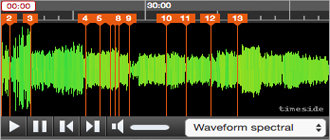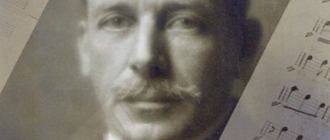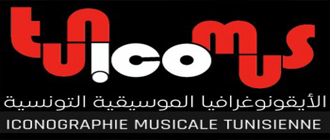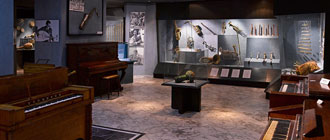A great amateur of the traditional arts of the Orient, Baron d'Erlanger built himself in his palace of Sidi Bou Said, a superb collection of carpets, mostly hand-knotted carpets and some woven carpets or kilims (flat woven).
This collection adorns the floor and walls of the different rooms and halls of the Ennejma Ezzahra palace comprising a wide variety of carpets from Asia Minor, Central Asia and Persia, in addition to a few specimens of rugs from Kairouan (Tunisia) and Europe (the Carpathians in Romania). The knots used are either the Turkish Ghiordes known as symmetric knots or Persian knots known as Senneh, allowing the implementation of sophisticated patterns.
Mostly made of sheep's wool (warp and weft, sometimes with a cotton warp), these carpets feature geometric and floral patterns; the only exception being a Persian prayer carpet, the figurative ornamentation of which feature animals (oxen, lions, goats). This carpet evokes paradise.
The most common patterns (naqshah) and symbols include Afshan, a pattern consisting of rosettes alternating with groups of two palmettes, the Boteh pattern in the shape of a tear or pear or sprouting seed (a sign of rebirth and growth in nature), the Gül pattern, a small medallion of octagonal, hexagonal or Rhomboidal, Tureng pattern, a bergamot flower motif, and the Seh qab, a three-frame motif.
Like the majority of oriental carpets, all the carpets in the Erlanger collection are rectangular in shape, with the exception of one or two specimens of saddle rugs. The dimensions vary between large, so-called Ghali (more than 190cm x 280cm), runners and small prayer rugs or sajjada.
The collection boasts a few specimens of prayer rugs, the main motif of which is a bow-shaped niche called Mihrab, which is to be oriented towards Mecca during prayer. The centre of the arc is usually occupied by a suspended lantern.
If the carpets forming this collection are not dated in a precise way, it is presumed that their date of manufacture would be between the seventeenth and the twentieth century.
Turkish carpets come from the Ushak workshops, which was one of the main weaving centres of the Ottoman Empire, Ghiordes and Kula, but also tribal areas inhabited by the nomadic Turkmen population (Yomut, Tekkeh, Salor).
There are also some beautiful specimens of Caucasian carpets, which are easily recognizable by their extremely stylized and geometric patterns, usually on a red background, as well as carpets from Turkestan, recognizable by their dominant colour, red (sometimes combined with brown or blue) and their design based on octagons.
Persian carpets come mainly from Bejar in Kurdistan, Ardabil, Shiraz, Hamadhan, Malayer and Kashan.





